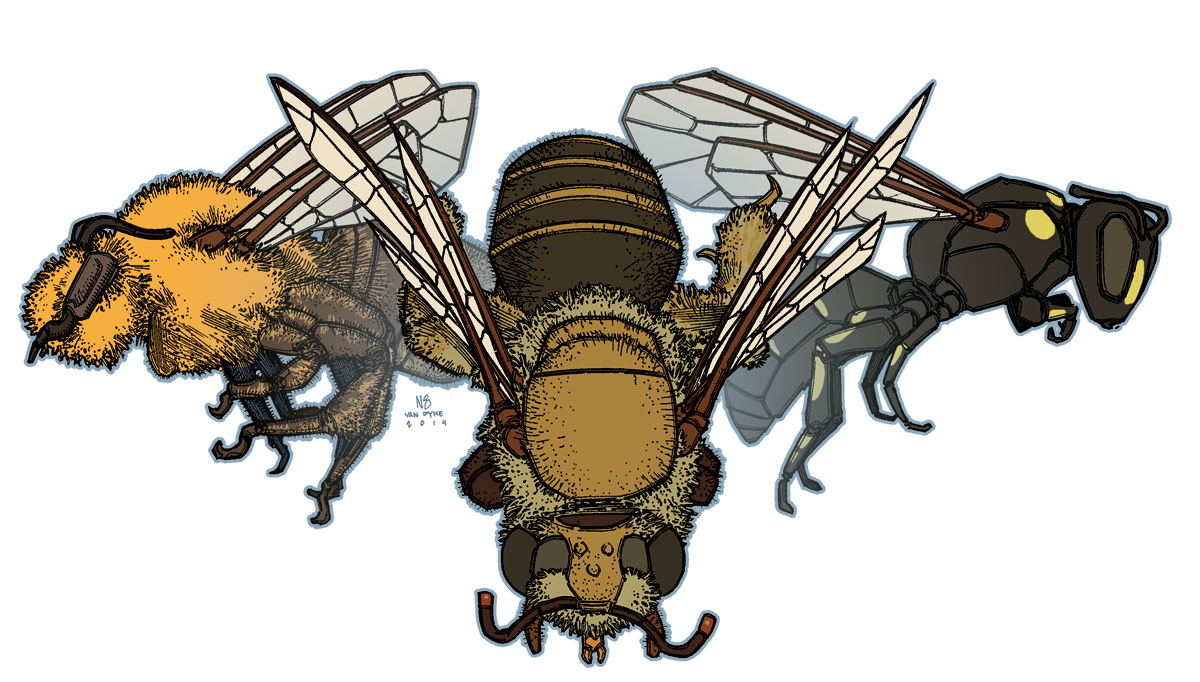This project first appeared in MAKE Volume 38, on page 92.
My wife, Colleen, is an urban naturalist. Her summer activities include tending her amazing native garden, raising monarch butterflies, and lately, building condos for solitary bees — bees that nest independent of a colony. Colleen first became interested in these bees when she saw them nesting in small pits in the bricks on the front of our house in Toronto. It turns out that of the 4,000 species of bees native to North America, over 1,000 are tunnel-nesting bees — they lay their eggs, provision them, and seal the entrance inside natural tunnels such as hollow plant stems and insect bore holes. Not every native bee is a solitary bee, and not every solitary bee is a tunnel nester.
Native bees are important pollinators and make a significant contribution to agriculture. Non-native species, such as the European honeybee, have been employed commercially to pollinate crops but have, in recent years, been subject to devastating diseases. The Delaware Department of Agriculture estimated that “native bees were responsible for pollinating 3 billion dollars in crops in the U.S. in the year 2000. … Encouraging native pollinators is a pollinator insurance policy.” The type of native bees attracted to your bee condo depends largely on where you live. In Toronto, our condos attract mainly cellophane, masked, mason, and leaf-cutter bees.






















